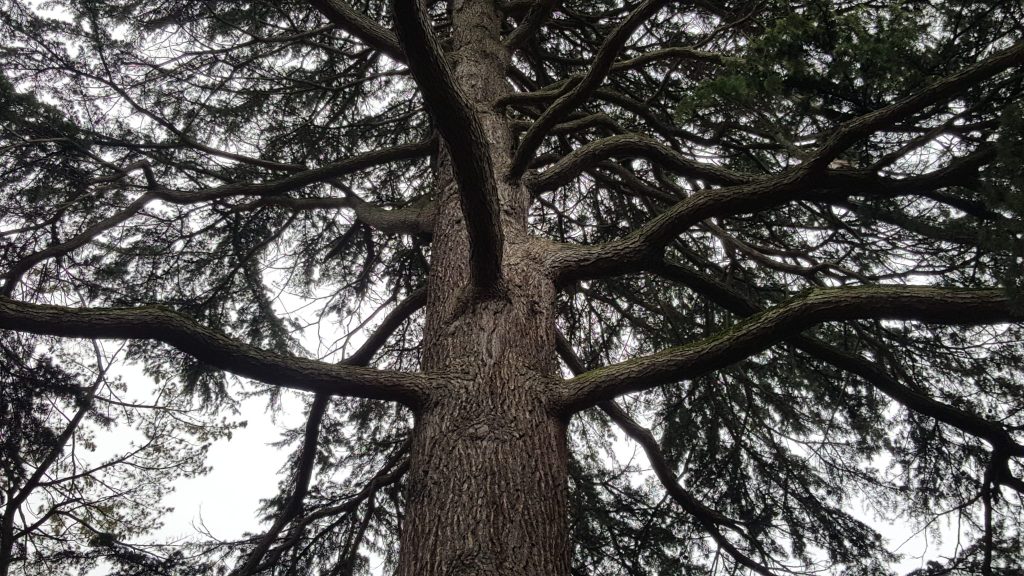On the 8th and 11th March 2023, Dr Richard White contributed to the Botanical Encounters series with a talk and a walk
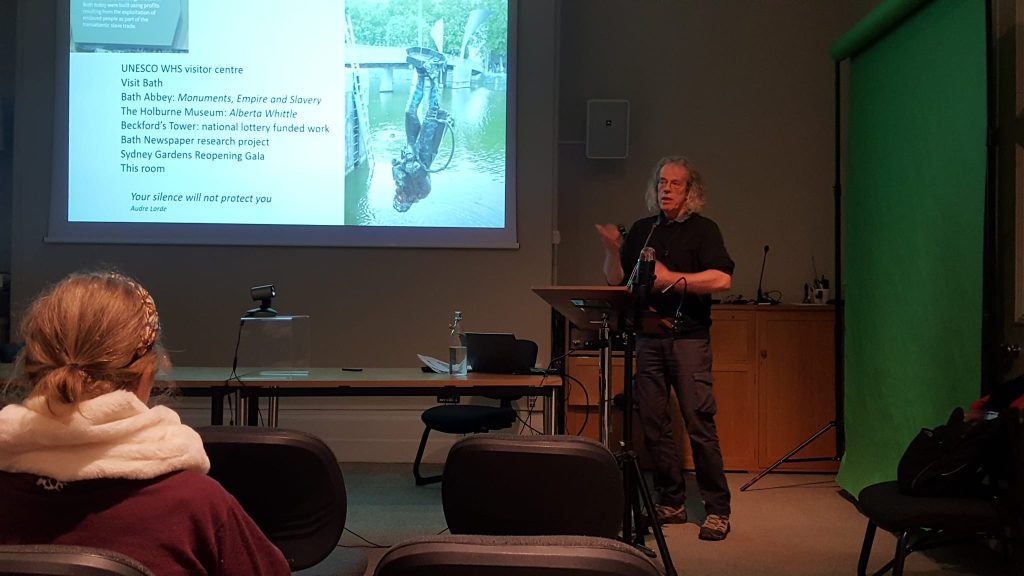
Dr Richard White, artist researcher and lecturer at Bath Spa University, began his talk by acknowledging his own positionality as an ‘older White man who grew up in a rural West Country village steeped in White Christian supremacy’. Speaking in the Elwin Room at the Bath Royal Literary and Scientific Institution, beneath the frescoes painted by Andrea Casali for Alderman William Beckford’s (1709–1770) house in Wiltshire, Fonthill Splendens, Richard recalled his own curiosity about the origin of Bath’s wealth when he first moved to the city about 17 years ago. He explained how his “walking-with” approach uses the embodied experience of participatory walking in space for social learning. He then discussed two examples of his participatory walking practice which engages with the legacies of the transatlantic trade in enslaved Africans and slave ownership in Bath. The talk focused on the projects ‘Sweet Waters’ and ‘Botany, Empire, and Deep Time’ , both grounded in the concepts of epistemic justice and wounding. These projects have explored the possibility of social repair in Bath, a UNESCO World Heritage city haunted by the specters of empire and colonialism that continues to ignore an important part of its history. The talk concluded with thoughts on possible strategies to break the “dead silence” in the aftermath of the Colston statue toppling in Bristol.
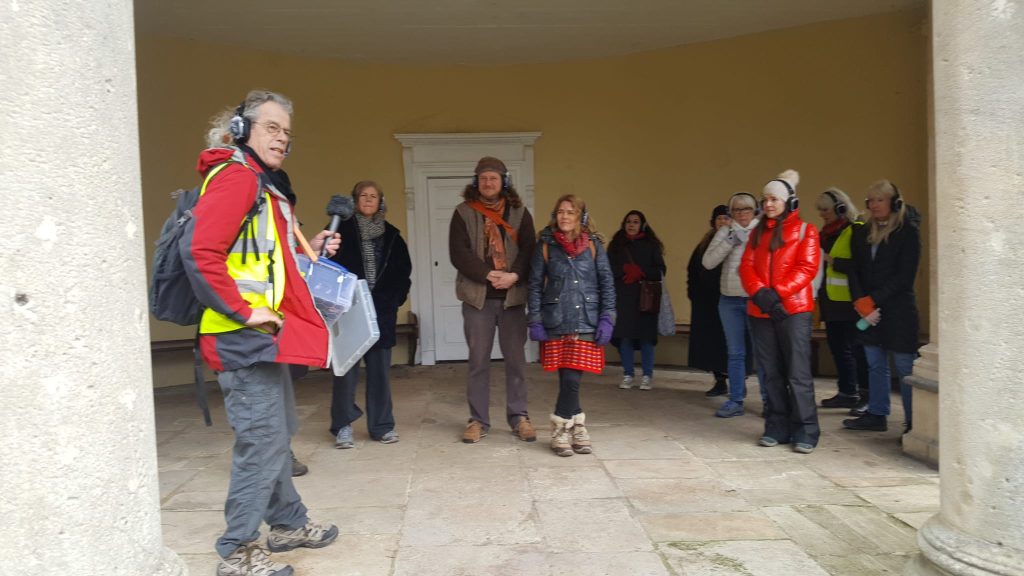
Three days later, Richard demonstrated through his soundscape-enhanced walk in Bath’s Sydney Gardens how mature trees that ‘mangled through different rollers of time and place’ can help us uncover the layers and entanglements of obscured history and reluctant heritage. As the group of participants wandered around in the garden, he told compelling stories about a few veteran trees, some of them ‘native British’ beech and oak trees, others foreign additions like horse chestnut or cross breeds like the London plane, a descendant of the American sycamore and the Oriental plane. Richard also traced the origins of some exquisite trophy plants, including a Catalpa or Indian Bean tree and a truly remarkable giant Sequoia whose emotionally gripping first-person narrative, underscored by sound and music, constituted one of the highlights of the walk for most visitors.
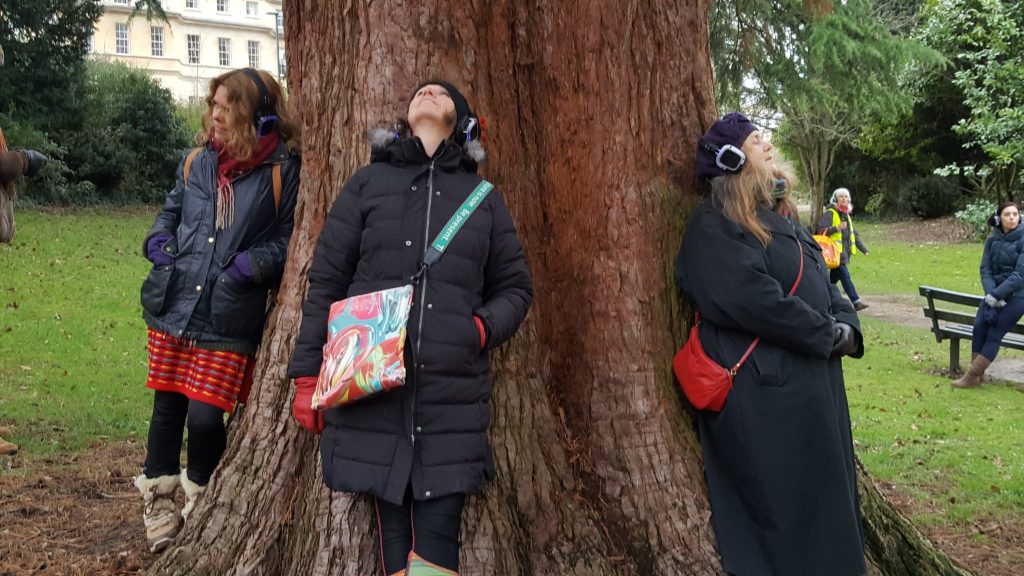
The complex stories behind these trees’ arrival to Sydney Gardens revealed how colonial history has been entangled with plundering natural heritage across the globe and imposing structures of European thinking about plant knowledges worldwide. Richard explained that many plant hunters, sincluding the Tradescants and Joseph Banks, contributed to extending the Eurocentric botanical networks of the British Empire. These colonial networks participated in disconnecting plants from their indigenous names and associated knowledge systems.
Richard also invited the vistors to connect with objects in Sydney Gardens to make the role of slavery in Britain’s industrial expansion more palpable. He pointed out that the same iron, manufactured at Abraham Darby’s foundry in Coalbrookdale around 1800, that served for the bridge across the canal, was also used to make shackles and chains that held enslaved people captive in Britain’s former colonies.
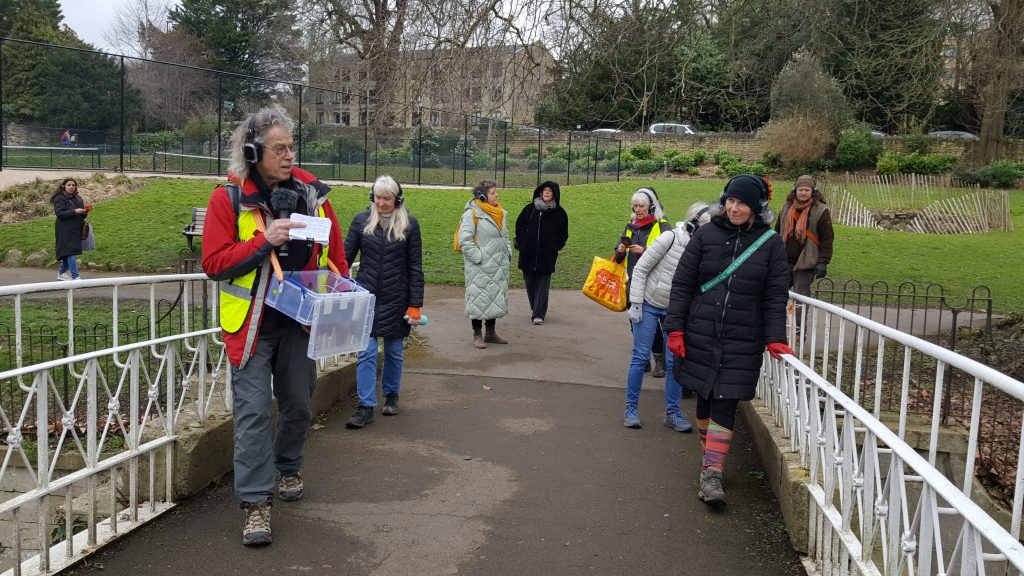
The walk made the participants realise that plants and trees brought to Britain by colonial plant collectors have become a normal part of our landscapes. By telling the stories of a few trees connected with peoples whose lands were occupied and whose knowledge was disrupted and extracted, the walk made the participants travel through time and space, highlighting some obscured links between slavery and Empire, the nineteenth-century industrial expansion in Britain and global warming, which may be the ultimate price to be paid. Richard concluded the walk by asking questions about our contemporary responses to the climate and human rights crises as well as about processes of social repair.
